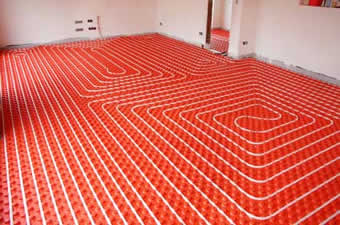Hydronic Heating System Design

This article does not any. Unsourced material may be challenged and. (January 2010) () Hydronics is the use of a liquid heat-transfer medium in and. The is typically water,,. Some of the oldest and most common examples are and hot-water. Historically, in large-scale commercial buildings such as and facilities, a hydronic system may include both a chilled and a heated water loop, to provide for both heating and. And are used either separately or together as means to provide water cooling, while heat water.
A recent innovation is the, which provides an efficient form of for homes and smaller commercial spaces. Main article: Many larger cities have a district heating system that provides, through underground piping, publicly available high temperature hot water and chilled water. A building in the service district may be connected to these on payment of a service fee. Types of hydronic system [ ] Basic types [ ] Hydronic systems are of two basic types: • Hot water • Chilled water Classification [ ] Hydronic systems are classified in five ways: • Flow generation (forced flow or gravity flow) • Temperature (low, medium, and high) • Pressurization (low, medium, and high) • Piping arrangement • Pumping arrangement. Single-pipe steam radiator In the oldest modern hydronic heating technology, a single-pipe steam system delivers steam to the where the steam gives up its heat and is back to water. The radiators and steam supply pipes are pitched so that eventually takes this condensate back down through the steam supply piping to the boiler where it can once again be turned into steam and returned to the radiators.
Optimizing Hydronic System Performance in. Guidance on proper design and commissioning for heating contractors and energy consultants is hard to find and is not.
Despite its name, a radiator does not primarily heat a room by radiation. Nokia 7610 supernova pc suite software free download. If positioned correctly a radiator will create an air convection current in the room, which will provide the main heat transfer mechanism. It is generally agreed that for the best results a steam radiator should be no more than one to two inches from a wall. Single-pipe systems are limited in both their ability to deliver high volumes of steam (that is, heat) [ ] and the ability to control the flow of steam to individual radiators [ ] (because closing off the steam supply traps condensate in the radiators). Because of these limitations, single-pipe systems are no longer preferred.
These systems depend on the proper operation of thermostatic air-venting valves located on radiators throughout the heated area. When the system is not in use, these valves are open to the atmosphere, and radiators and pipes contain air. When a heating cycle begins, the boiler produces steam, which expands and displaces the air in the system. The air exits the system through the air-venting valves on the radiators and on the steam pipes themselves.
The thermostatic valves close when they become hot; in the most common kind, the vapor pressure of a small amount of alcohol in the valve exerts the force to actuate the valve and prevent steam from leaving the radiator. When the valve cools, air enters the system to replace the condensing steam. Some more modern valves can be adjusted to allow for more rapid or slower venting. In general, valves nearest to the boiler should vent the slowest, and valves furthest from the boiler should vent the fastest. [ ] Ideally, steam should reach each valve and close each and every valve at the same time, so that the system can work at maximal efficiency; this condition is known as a 'balanced' system. [ ] Two-pipe steam systems [ ] In two-pipe steam systems, there is a return path for the condensate and it may involve as well as gravity-induced flow.
The flow of steam to individual radiators can be modulated using manual or automatic. Two-pipe direct return system [ ] The return piping, as the name suggests, takes the most direct path back to the boiler. Advantages [ ] Low cost of return piping in most (but not all) applications, and the supply and return piping are separated. Disadvantages [ ] This system can be difficult to balance due to the supply line being a different length than the return; the further the heat transfer device is from the boiler, the more pronounced the pressure difference. Because of this, it is always recommended to: minimize the distribution piping pressure drops; use a pump with a flat head characteristic [ ], include balancing and flow-measuring devices at each terminal or branch circuit; and use control valves with a high head loss [ ] at the terminals.